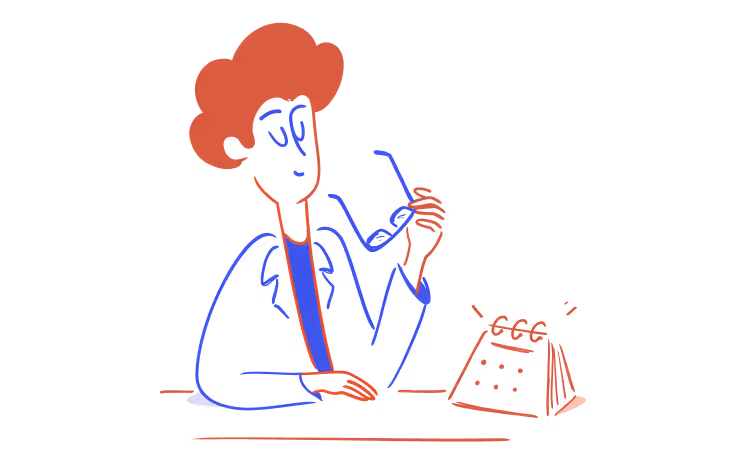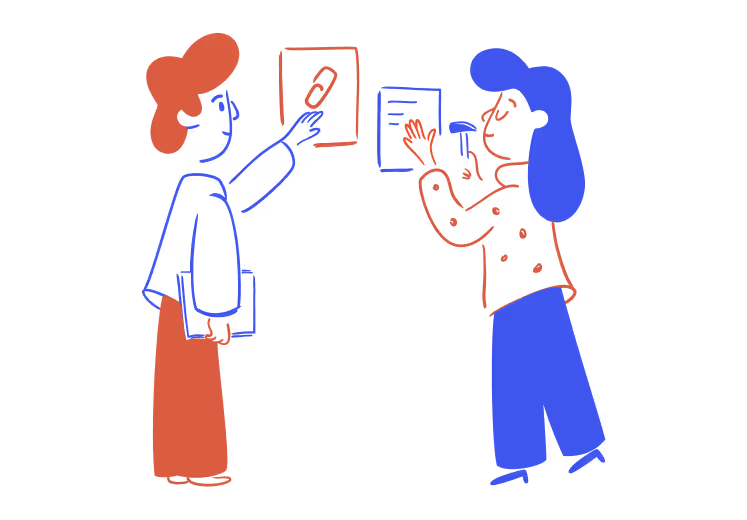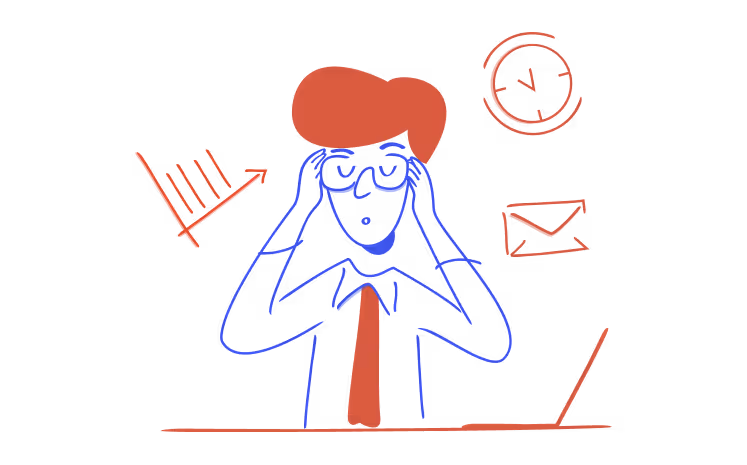How to Approach a Website Redesign
It's no secret that the first thing a website visitor notices is the design. The visual part of your site is one of the first and foremost factors that make a visitor stay longer and explore your products and services. Your website needs to be up-to-date, stylish, easy to use, and follow the latest design trends to stay interesting and attractive.
Time goes on, and what was considered stylish and convenient web design five years ago is already outdated today. Therefore, sites need to be updated from time to time. These can be minor changes, a deep homepage redesign, external improvements, or the addition of new features. All this is included in the concept of the website redesign. Hallwil specialists have extensive experience in revamping commercial and corporate websites for businesses in various industries and can offer a website redesign strategy template. Therefore, today we will tell you how to approach a website redesign.

What is a website redesign?
A redesign is the modernization of a website, involving changes in its appearance, content, functionality, and so on.
In simple words, a redesign is a renovation of your website. Repairs can be major or cosmetic, depending on how long ago the last redesign was done and what problems you want to solve.
Some believe that the redesign of the site involves only its visual change. But in fact, a high-quality redesign has many aspects and includes:
- Visual part: giving the old design a fresh look, changing fonts, updating the logo and colors, adding animations and new images, etc.
- Changes in functionality: deleting old and adding new sections, pages, filters, improving navigation.
- Technical works. Their result is not reflected in the external design of the site and includes the improvement and cleaning of the site code. As a result, the site works faster and is better indexed.
All these changes can be introduced gradually, leaving the old version of the site working. However, it is also possible to launch a deep website redesign process that will affect all of the above points. This is necessary when the site works intermittently, affecting the reputation and profit of the company. A complete site redesign is an important decision that companies usually take a long time to make.
In any case, the redesign of the site or its particular pages is a responsible step that should be entrusted to professionals that know how to manage a website redesign smoothly and effectively.
Website redesign vs. Website refresh
Website redesign is not always required, especially since it takes quite a lot of time and often involves changing the site's structure. In some cases, you can refresh your website instead. The difference between a website redesign and a website refresh is the scope and depth of the work. How do you determine what exactly you need, a redesign or a refresh? The following factors will help you decide:
- Time - redesign project timeline. A deep website revamp takes months, as it involves many website redesign steps and processes. A site refresh can be completed in a few weeks. Even after a complete site redesign, time will pass, and you will need to change some elements – in this case, you should resort to a site refresh. Constant site refreshes help keep it productive, up-to-date, and good-looking.
- Cost. A lot often comes down to budget, and you need to understand how much the planned changes cost and how much money you have for this project. Obviously, the cost of different projects will be different due to individual characteristics, but a refresh will always be cheaper than a redesign since the amount of work is less.
- Goals. If your site sells well the way it is, you may need only to refresh its design. If the site has stopped bringing customers, or you are seeing a high bounce rate and the site is not performing its tasks now, you will need a more comprehensive approach.
- Ease of use. If you plan to manage the site's content, its structure and admin panel should be convenient for you. A redesign often involves moving to a new CMS, which also needs to be taken into account.

What do you need to know before redesigning the site?
You might think that if a redesign is so useful, then you can completely update your site every year. But in fact, you shouldn't do that. A site redesign is performed only when the site's current version does not suit you completely in terms of business and marketing indicators. For example, if your site is not mobile-friendly. If you redesigned the site a few years ago and it fully fulfills its objectives, you may not need a redesign. In addition, you can't constantly redesign the site from A to Z; otherwise, it will be inconvenient for regular users who have just gotten used to the old design.
The main reasons to order a website redesign
Website redesign is beneficial only when there is an understanding of what exactly you want to change and what you expect in the end. It is worth considering whether significant changes will save your site.
The reasons for redesign can be represented in the following list:
- The site is transferred to a new CMS.
- The website has become less visited; the conversion has fallen.
- A content update is required.
- The design of the site is outdated and clearly loses to competitors.
- Expanding and changing the target audience.
- Entering a new market.
- The need for fast loading and clean code.
Below we will consider in more detail the main situations when it is worth resorting to website redesign.
Website design is outdated
There are sites that you want to close immediately as you see them. Some website owners do not fully understand that the field of web design is developing very quickly, and it is important to keep up with the times. Without exaggeration, every day, there appear new functions and options that make the site more convenient and attractive.
Here are the signs that the design of your site is far from ideal:
- No adaptation for mobile devices. In 2022, the number of global mobile users was estimated at 6.6 billion, marking a 4.9% annual increase. A huge proportion of these people shop online from their smartphones. If your site is not adapted for mobile gadgets, you lose a huge part of the audience and are also lowered in the Google rankings.
- There is no clear structure. Often site owners add new pages and sections without thinking about the overall structure. As a result, the site becomes a chaotic cluster of pages, many of which are so deep that users cannot find them. The information on the site should be structured for the convenience of customers, especially for online stores.
- Lots of small items. Inscriptions on pictures and banners are the fashion of the 2000s. Such sites are not attractive to modern visitors and increase the bounce rate.
- Color inconsistency. Red inscriptions, a brown menu, blue background, a green catalog, and decorative patterns are bad taste, which again increases the bounce rate and does not contribute to the site's conversion.
- Pictures of poor quality. As technology advances, so do the requirements for images. Smartphones with 4K resolution that have appeared on the market allow you to view high-quality photos and illustrations. Therefore, at some point, you will be faced with the task of replacing all the images on the site.
The number of sales decreases
Having your own online store, you probably keep track of the number of sales. If customers begin to leave for competitors, and this has been going on for a long time, think about it. Maybe your website simply does not meet the requirements of the user? In this case, you need to change the functionality and design of the site.
Still, remember that redesigning a website does not always solve this problem. So that the result is not long in coming, use the redesign in combination with SEO tools to increase conversion.
Usability problems
Your site should be comfortable and easy to use for visitors. Site navigation, the process of adding goods to the cart and payment, logging in and registering – all this should be intuitive and easy for your potential customer. Modern approaches to website development define clear requirements for UI/UX design. If your site does not match them, it will be difficult for users to navigate it.
Slow loading, pages displayed incorrectly, and lack of a clear structure are signals that it's time to redesign your site. In this case, you need to order a website redesign as soon as possible.
We can help you estimate the cost of your project

What affects the cost of work?
This is a topical issue that interests clients in the first place. Among the determining factors in the cost of a redesign, the following are distinguished:
- Site type. The price of redesigning a corporate website will differ from redesigning an online store. The more pages, products, and e-commerce functions, the more expensive and more difficult it is to redesign the site.
- Stylistics. You can choose classic, minimalism, typography, etc. All this involves the development of an appropriate interface and navigation system.
- Uniqueness. Using ready-made templates or developing a unique design are two opposites that differ significantly from each other in terms of the final cost.
How to plan a successful website redesign?
If you want to know how to revamp your website, you should be aware that it is a rather long process that requires preparation. You have to do a lot of work before redesigning and decide for yourself what kind of result you want to get in the end. Below we describe the basic steps for a website redesign project plan.
Record current performance indicators
If you’re thinking about how to rebuild a website, first you need to record your current performance. This will give you an idea of where your current site is and what metrics you want and can improve with the redesign.
Record the monthly performance of your website according to the following metrics:
- The number of visits and unique visitors.
- Bounce rate.
- Average time spent on site.
- Top-performing keywords in terms of rankings, traffic, and lead generation.
- The number of inbound link domains.
- The total number of leads per month and received applications/orders.
- The number of abandoned carts.
- Total sales (in your currency).
- The total number of indexed pages.
- The total number of pages receiving traffic.
We recommend using the same tools to measure all of these metrics so that you can use them after the redesign. Otherwise, you can get too different indicators and compare apples with oranges.

Set goals
Answer the question of why you need a redesign based on what was described above in this article. If your answer is "Well, our competitor recently redesigned their website" or "We were told by marketers that we haven't done anything for a long time," it's simply not enough.
You must clearly understand why you are redesigning the site and tie website redesign goals to measurable results.
Here are some examples of good data-driven goals for website redesign:
- Increase the number of site visits and unique visitors;
- Reduce bounce rate;
- Extend the time spent on the site;
- Increase conversion and/or reduce the percentage of abandoned carts;
- Increase overall sales;
- Increase domain authority;
- Improve SEO performance and get into the top Google search results;
- Receive more applications and orders.
You will most likely have several goals from this list, as they are interconnected. For example, you need to increase traffic and reduce the bounce rate to increase conversions.
Define your tone of voice, branding, and value proposition
A website redesign is a perfect time to revise your branding and make the necessary changes to your tone of voice, communication approach, and unique value proposition. You should also think about the logo, corporate colors, and other design elements. They should be consistent and match your brand.
Your website should reflect your work, as well as your values, mission, and identity. When visiting your site, the user should immediately understand what they will find here and why they should stay.
Before creating a redesign, consider whether you want to change your branding or approach to communicating with customers or you will leave everything as it is. Document your decisions.
Determine buyer persona
This may be news, but you are redesigning a website primarily not for yourself but for your clients. Thus, you need to understand who your target audience is and what they expect from your site and its design.
In order to better understand your audience, we recommend that you draw up several buyer personas: their age, location, job position, educational level, interests, and so on. This way, you can better understand what your customers expect from your site and how it should look in order to attract visitors from your target audience.
Shape your website redesign strategy around the visitors who are most valuable to you. Also, think about whether your target audience will change after the site redesign and whether you want it. Does your branding and website content match your target audience? Keep this in mind when designing your site.

Save pages optimized for search engines
If your site has been running for a long time, you probably have some achievements in SEO. It is important to keep them in order not to start all the promotion work from the beginning after the website redesign or website redevelopment. Here are some search engine optimization tips:
- Save the most effective pages. Use any marketing tool to identify the pages that get the most traffic, convert the most leads, or rank high in the search results.
- Consider a 301 redirect strategy. This is important to retain traffic, and the value of a page's link profile. Create a spreadsheet and record old pages and redirects to be done by the technician team.
- Do keyword research. Each page on your site should match one main keyword or phrase. Prepare a table with pages to be redesigned and target keywords.
Analyze competitors
Of course, your redesigned site doesn't have to be exactly like your competitor's site, but you can study it and get useful insights. Gather a list of your competitors' websites and discuss with your project manager and marketer what you like and don't like about them. After conducting a competitive analysis, make a list of actions with areas for improvement and ideas on how you can stand out from the competition.
Take inventory of high-performing content on your site
While a redesign is a great way to improve your website's performance and conversions, it can also hurt the current achievements. Your existing site probably has a lot of high-performing content you've already created that could get lost during the redesign, hurting your marketing results. For example, you might want to keep the following:
- The most popular content among your visitors;
- Pages with the highest traffic;
- Videos that have the most views;
- Pages that are at the top of Google ranking for certain queries;
- The number of external links to some pages and so on.
If you remove pages with a lot of inbound links from your site, it will have a negative impact on SEO and lower your position in the SERP.
Note that many web designers don't think about this step because they're not marketers. You should separately bring this stage for discussion or leave the case to agencies that take on complex website redesigns, such as Hallwil. We are experts in website redesign business and know how to modernize a website without losing any single piece of important content. To explore website redesign pricing just contact us.
Choose the right software
Another important step in preparing for a website redesign is choosing the right software to run your website on. You need to choose a CMS that works for you and provides all the features you need.
Hallwil builds websites on Webflow (one of the best website builders) and Shopify and also offers website redesign on some other CMS. Our experts will tell you about the advantages and features of a particular CMS and help you make an informed choice.
Prepare terms of reference
The last step in planning a redesign is collecting all the wishes for changes and preservation of old pages into a single technical task. The project manager will help you turn your wishes into a detailed guide for developers, UI/UX designers, and QA technicians.
Based on the chosen CMS, your wishes, and project features, we assemble a suitable team that redesigns your website. The project manager communicates with you, checks the features implemented, and reports to you every month.
How often should you redesign your website?
Hallwil experts recommend a website overhaul every 3-5 years. During this time, trends in web design change, and new approaches and Google requirements for the appearance and loading speed of the site appear. You can update the site's design more often, but a simple refresh of some pages is usually enough.
A redesign is a bigger change to your existing site that affects all or almost all of the pages. Therefore, you must be sure that this is exactly what you need and that the redesign will not damage your current sales, traffic, and business reputation.
A redesign is definitely needed if:
- Your site looks too outdated compared to competitors;
- You are launching a new line of business or changing the vector of activity;
- You want to rebrand, and your new corporate style and values do not match the design of your site;
- You've been seeing a significant drop in conversions for a long time;
- Your site does not meet the current requirements of Google Core Web Vitals;
- Your site does not have a clear structure or has a lot of junk pages, etc.

Popular mistakes companies make when redesigning a website
Companies are not always happy with the result of a redesign. This often happens due to a mismatch between expectations and reality and other reasons. We have collected the main mistakes companies make below:
- Lack of vision for the end result. You can't just start the redesign process and change some pages along the way. You need to clearly understand what you want to see at the end. To do this, draw up a technical task with all the subtleties and details.
- Carrying out a redesign without analyzing user behavior. Modern marketing tools allow you to conduct a thorough analysis and literally see how an ordinary user interacts with your site. If, as a result of the redesign, the site becomes even more inconvenient and incomprehensible to the user, this will obviously lead to an even greater drop in conversion.
- Copying a competitor's website design. Sometimes companies see a successful competitor's site and try copying their design, navigation elements, etc. However, your site must be unique and attract users with its specific features. Blindly copying the successful cases of competitors will not lead to success.
- Disable the old version of the site in anticipation of the new site. A site redesign can take several months, and it is obvious that if you switch off your site during this time, you will lose a lot of profit.
- Expecting fast results. During the first time after the site redesign, you may experience a slight drop in conversion because your regular users will be a little confused by the new design. You need to give them some time to get used to it and make the transition smoother. A good approach is to leave the old version of the site for a while, accessible by clicking on a special button, even when the new version is already active.
- The expectation that the redesign itself will solve your business problems. Even if you have made a superb design, it will not become popular without SEO optimization. You need constant and comprehensive work on your site even after it is launched.
- Poor quality content. This is one of the common mistakes. Pay special attention to good texts and images. Without them, a site with even the most stylish design will not look professional and attractive.
Website Redesign Pricing
When you plan to redesign existing website it's essential to plan your budget. The cost of a simple and clear design for a landing page, for example, can range anywhere from $200 to $3,000 or more. A medium custom website design from an agency can vary from $3000 to $30000. Larger and more detailed websites cost between $30000 to $60000 or even more.
Explore our redesign packages - contact us today.
FAQ
The cost of redesigning a site depends on the type of site, the number of pages, and the complexity of the terms of reference. Our company offers its services on a subscription basis – you pay a fixed amount for the number of working hours of our specialists. Want to know how to redesign a website at a low cost? Contact our managers, and they’ll offer you the most cost-saving options after an initial consultation.
We recommend conducting a website redesign every 3-5 years. You can change the look of your site more often, but a website refresh is usually sufficient for this.
A website redesign can have a great impact on SEO. If everything is done correctly, you will be able to observe better indexing of your site and an increase in positions in search results due to cleaner code, up-to-date page structure, and improved content.
It all depends on the size of the site and technical requirements. For example, a B2B website redesign takes more time than a revamp of a landing page. On average, a website redesign takes several months, given the preparatory stages.
Fill out the form
Contact us to discuss your app idea and possibilities. We’ll advise you on the best solution and estimate the project. If you have any questions – we’ll provide you with answers.

.png)
.png)
.png)







